I really liked Legend of Zelda: The Minish Cap
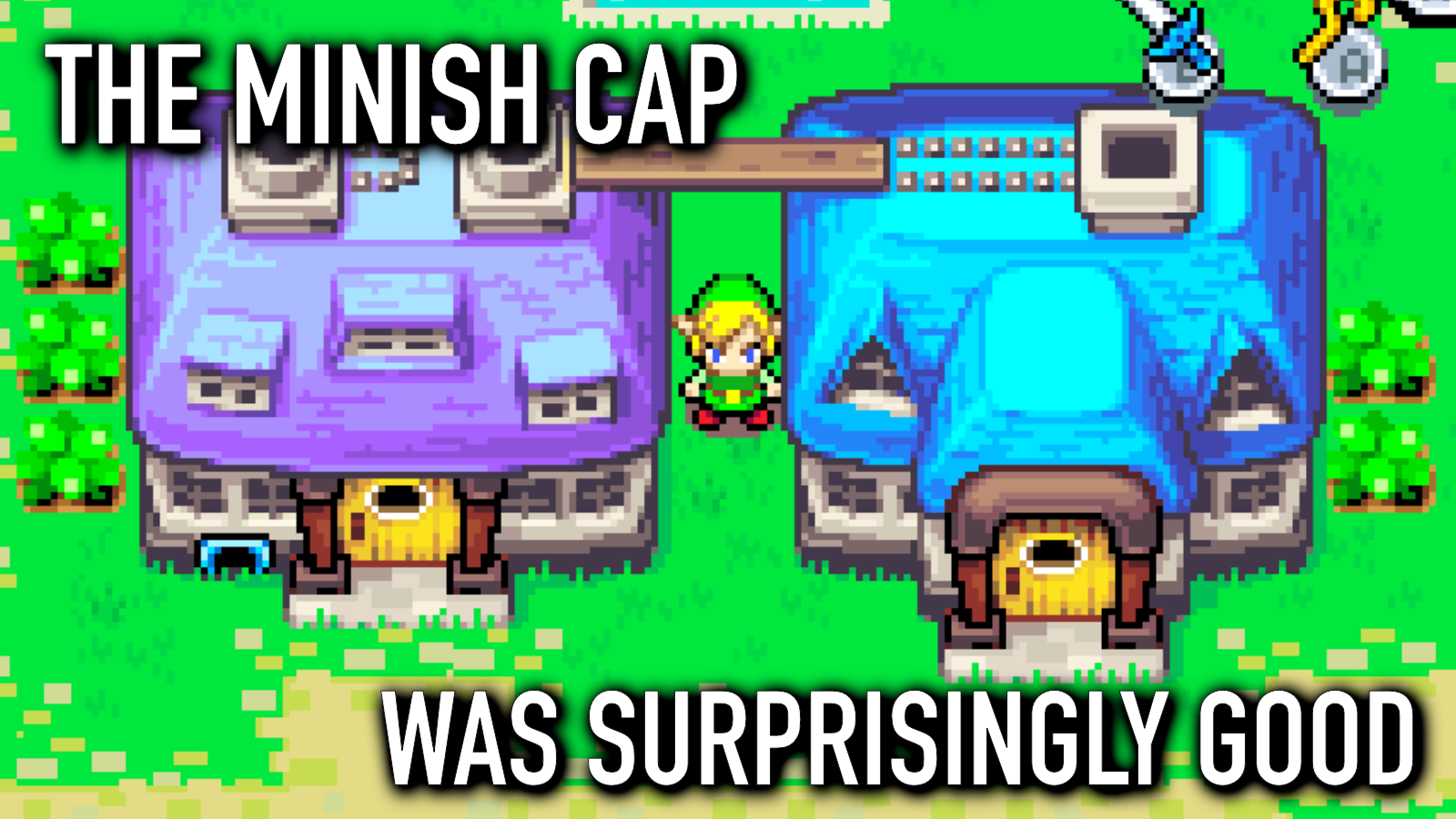
Note: slight spoilers ahead. Mostly gameplay related mechanics and not so much story spoilers.
When Game Boy and Game Boy Advance were new, I skipped many of the games that were handheld versions of the main console series because they didn't feel as great games due to hardware limitations. Super Mario games on Game Boy were pretty bad compared to their NES/SNES counterparts and even though I do love Link's Awakening now, the original one was rough to play due to Game Boy's limitations. Other games, made primarily for the handheld systems like Pokémon on the other hand were great on the system because they were clearly designed for them.
That lead to me skipping a bunch of games that I'm now reliving after 15-20 years. First one of them, The Legend of Zelda: The Minish Cap totally surprised me. Back in 2004 when it came out, I skipped it because it felt like a cheap spinoff type of game, especially during the time between Wind Waker and Twilight Princess. But now, in 2021, I picked it up and was blown away. The Minish Cap is one of my favorite Zelda games.
Small details, big impact
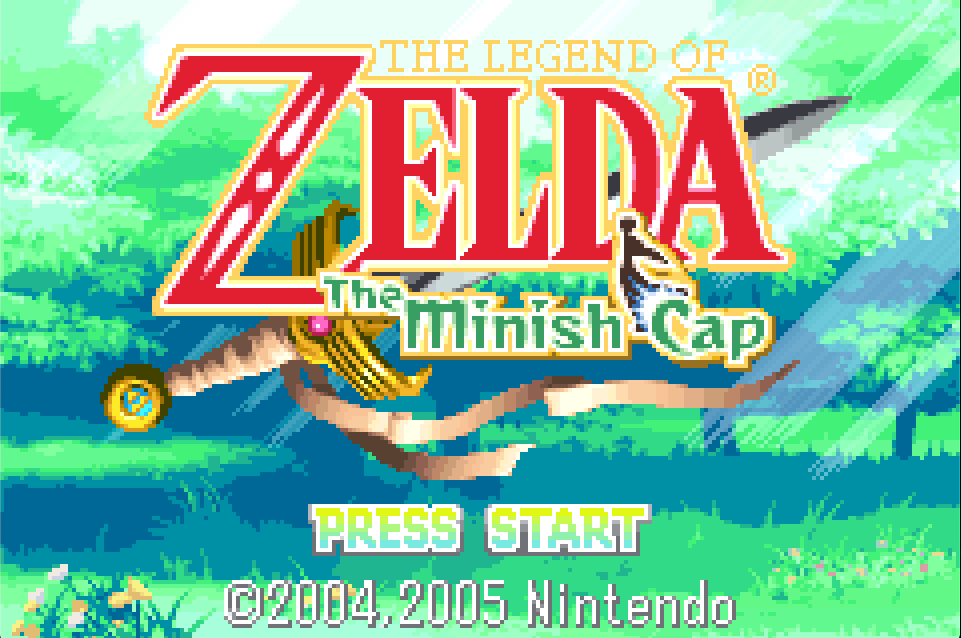
The game starts a bit slow but after you get through the usual opening cutscenes and gain your first few abilities/items, the story and the game picks up real fast. One of the main reasons I was hooked with the game and enjoyed it as much as I did was how straight-forward it was.
I'm not a big fan of dungeon puzzles where everything is spread out all over and it's your job as a player to try to remember overly complicated layouts and somehow mentally keep track of what doors switches could open and then go back and check them all. The Minish Cap has a nice balance on this. It has some light puzzles but after the puzzles, it's almost always clear where to go next. Some might feel it's too easy but I really enjoyed the level of puzzle & adventure in this game.
But let's be honest here. This balance is not why I was so drawn into the game in the first place but rather small details. The key mechanic in this game is transforming between normal-sized Link and a tiny Link and it is used so perfectly.

I especially loved how both worlds were intertwined. When you start the game, you don't really notice those small details but as the game progresses and you get more and more used to the mechanic, you start to notice them everywhere. And there's quite a lot of areas that are optional goodies that you can run into if you explore the world as a tiny Link.
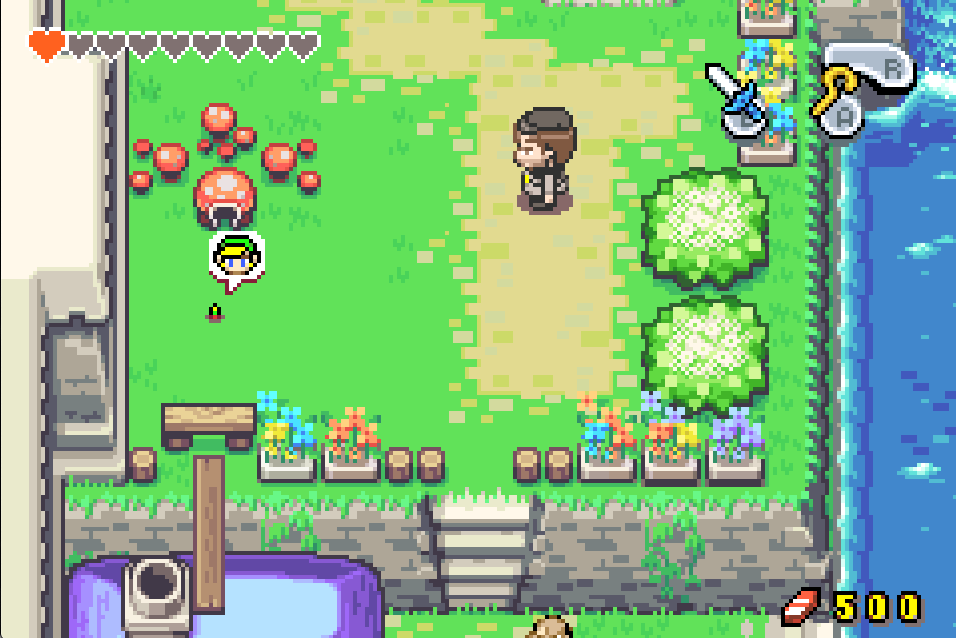
Occasionally this mechanic is used to drive the story and occasionally for solving puzzles. Especially in the puzzle solving, it's used brilliantly by reusing the same rooms and even obstacles but in a new and refreshing way. I really liked that.
I hide, I jump, I build new paths
A smaller mechanic that truly captivated me in terms of level design were the kind of potholes that are everywhere around the kingdom.
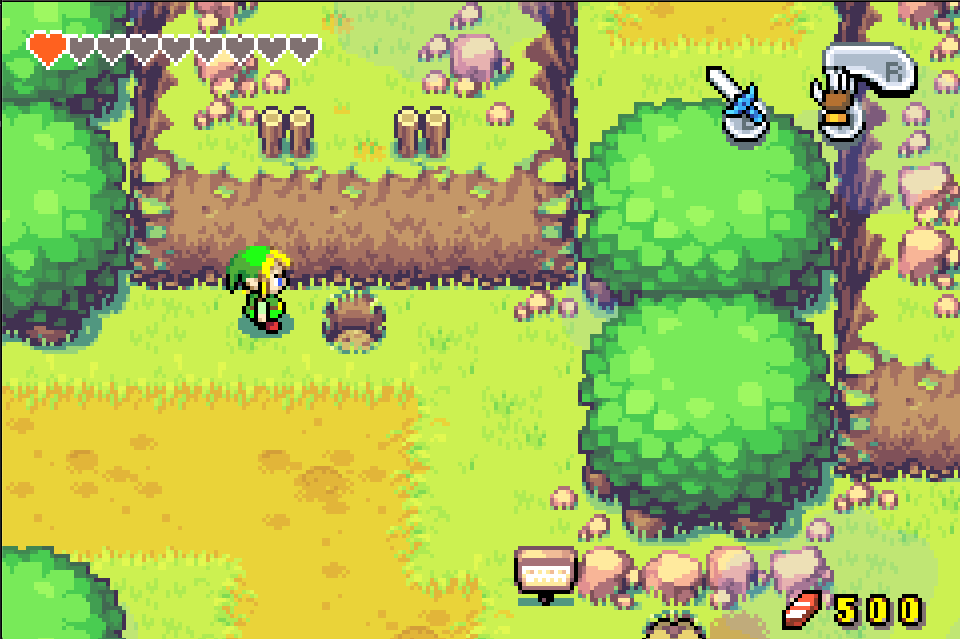
In many games, there are mechanics for blocking the player from passing from one direction but allows the player to traverse from the other one to make it easier for players to avoid a lot of backtracking. These potholes are also used for that but they are used for so much more that everytime I saw one, I was excited.
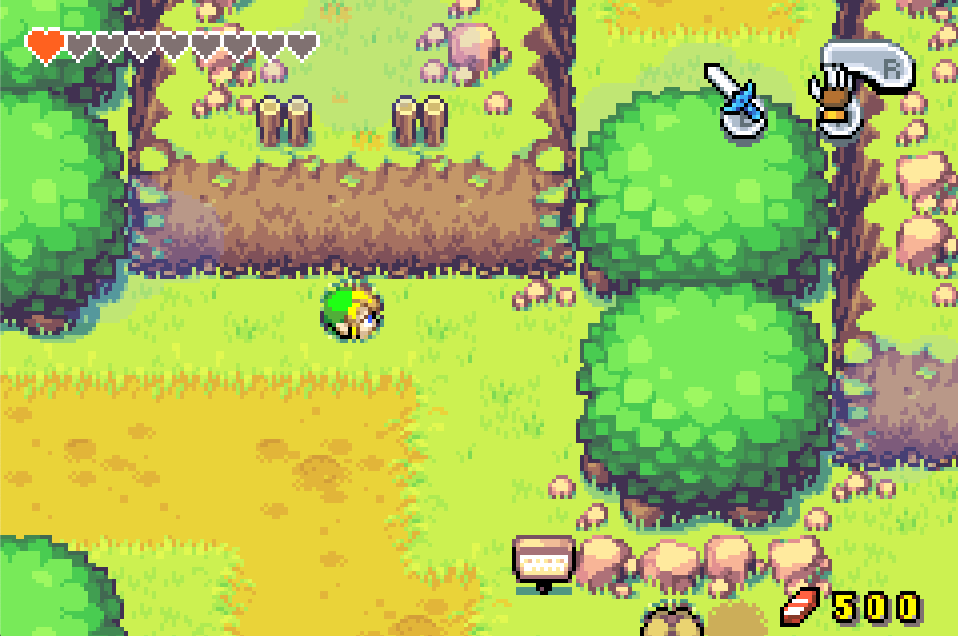
First use case is to hide in a hole. It can be used to hide from enemies and to duck from rolling spike barrels. And most importantly, Link looks adorable while hiding there.
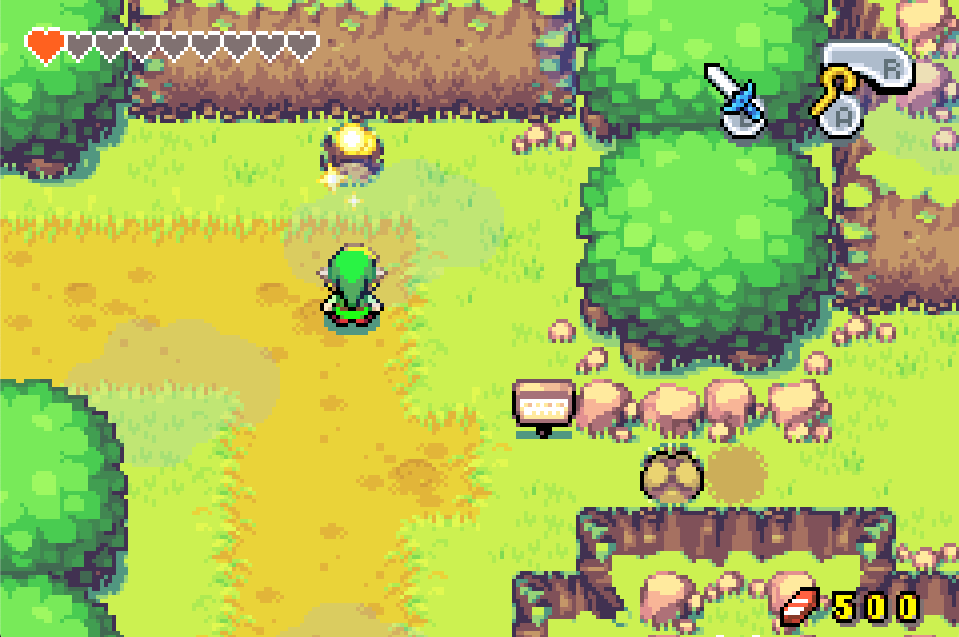
The second use case, bit later into the game is to do some magic stuff and make the holes glow. If Link hides inside them when they glow, he'll jump high into the air and that allows Link to travel into new locations using the same pots you use for hiding.
And the last use case, shown on the lower half of the above image is that you can roll a boulder into these holes, filling them so you are able to walk on them, thus creating new paths and making it easier to backtrack but also to revisit old areas when exploring with new abilities and items.
Kinstones everywhere

A less interesting mechanic in the game are Kinstones. They are these collectibles you find from all around the world that you can use with NPCs to find secrets like bigger wallets, optional quests and treasure chests. In a couple of places they are also used for advancing the story.
All in all, Kinstones are a feature I didn't really enjoy. They are great for players who want to explore every nook of the map and find every secret. And they bring the NPCs a bit more alive when you have a reason to talk to them.
I pretty much only did the mandatory ones.
And then there's the Cloud Tops
I hated the Cloud Tops area.
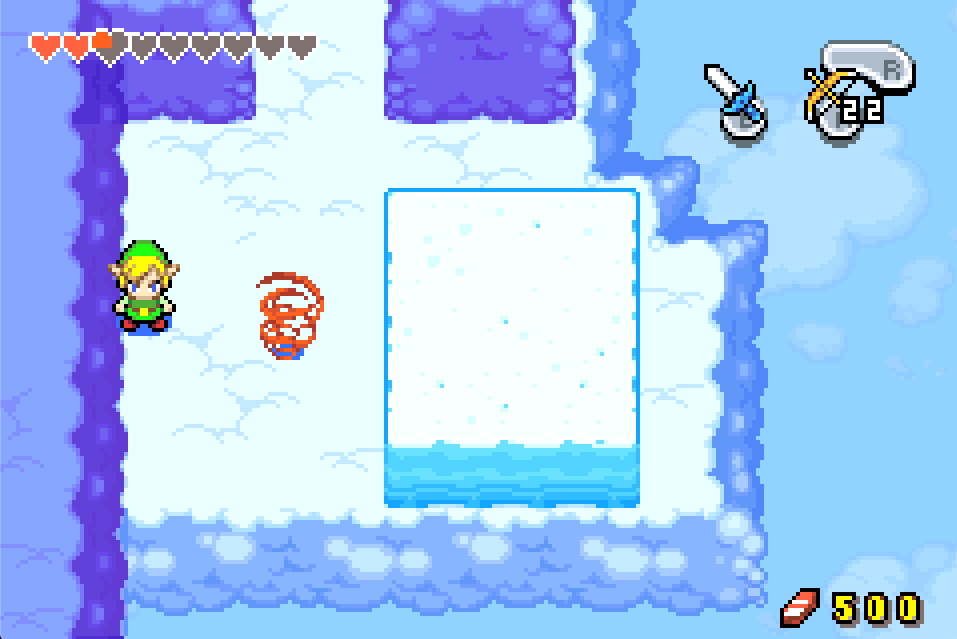
I mentioned earlier how I enjoyed the straight-forward nature of this games puzzles and dungeons. I almost stopped playing this game after spending a few hours in the clouds.
The problem with Cloud Tops area (and this is something I hate in level design so much) is that it's an asymmetrical area with lots of separate cloud areas connected by holes (that take you down), red whirlwinds (that take you up) and white whirlwinds (that allow you to fly from one cloud to another). The way it is built is that you cannot travel back to the previous section, everything looks the same and there's not much of anything to do.
I spent so much time being annoyed going around in circles because it was so difficult to follow. Eventually, I got so frustrated that I followed a walkthrough to get through the asymmetrical maze.
I seriously considered quiting the game completely at this point of the game. It was that horrible. But thanks to the wonderful people in the Internet who wrote that walkthrough, I pushed through.
All in all, one of the best Zelda experiences
I was truly amazed by this little adventure of Link. It's not the biggest Zelda game nor the most ambitious one but maybe that's the reason it worked so well. It had a really engaging and cute world, nice mechanics and good level design (aside from Cloud Tops).
If you're interested in learning more about Minish Cap's dungeon design, I recommend watching Game Maker's Toolkit's great video on the topic in their Boss Keys series. If you're planning to play the game yourself though, do that before watching the video because it has bigger spoilers than this blog post.
If something above resonated with you, let's start a discussion about it! Email me at juhamattisantala at gmail dot com and share your thoughts. In 2025, I want to have more deeper discussions with people from around the world and I'd love if you'd be part of that.